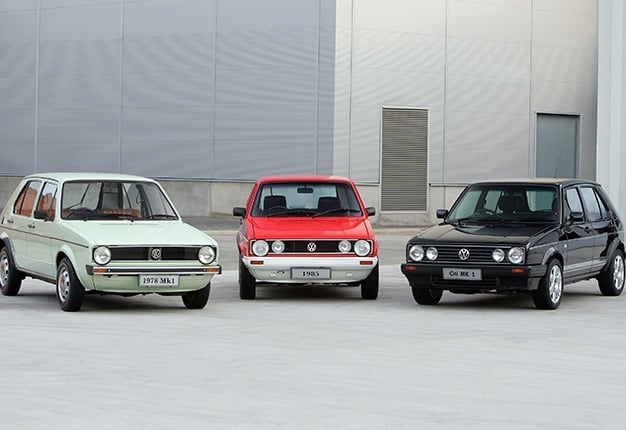
They're not the fastest nor the most expensive but these were cars defined motoring in the 2000s.
Check out our list below and email us which car of the "noughties" you enjoyed the most.
Honda Accord
If you needed to spend clever money on a luxury car in the mid-2000s, that was laden with features and guaranteed to never become a maintenance nightmare, Honda had the solution.
READ: Toyota Tazz, BMW E36, Nissan Maxima... Here are some of Mzansi's motoring icons of the 1990s
Its seventh-generation Accord was a stealth sedan supercar – and we don’t mean ‘supercar’ in the traditional performance sense of the word. We mean it was a super car, one which did everything at the highest possible standard.
Kia Picanto
When Kia launched its first-generation Picanto in the mid-2000s, Korean brands were still trying to establish themselves as a credible alternative to those entrenched Japanese manufactures in South Africa.
Cressida, Cortina, Caravelle... Here are some of Mzansi's motoring icons of the 1980s
A decade later, Kia is the eighth-biggest brand locally and its cachet beyond any doubt.
Much of the credited for this must be apportioned to Picanto, a car which proved that budget hatchback motoring could be stylish instead of awful.
Image: Youtube
The original Picanto’s styling was cheerful, especially after the first-generation facelift and with Kia producing and stamping its own steel, the structure was a lot more reassuring that most budget motorists had been accustomed to.
Fantastically frugal 1-litre engines made running costs entirely reasonable and for traffic driving convenience, there were automatic transmission too. In fact, that last technical detail as always made Picanto appeal to novice drivers and the elderly.
Toyota MR2
The idea of a reliable and affordable mid-engine sportscar is completely void in 2018. But there was a time when just such a thing existed and could be serviced and supported by the most diverse geographic dealer network in South Africa.
Image: Net Care Show
Toyota’s third-generation MR2 was everything you’d ever want in a compact sportscar: light, reliable, engaging, deftly balanced and quirkily different in appearance. Think of it as Lotus driver appeal with Toyota quality and design integrity. Amazing amalgamation of attributes, isn’t it?
It’s unimaginable that such a vehicle could exist in 2018, but for most of the 2000s you could order one at your local Toyota dealer. They were 103kW of happiness with all the joy that rear-wheel drive could bring in a mid-engined package. Especially one which weighed less than four figures.
BMW 1 Series
In typically purist fashion BMW was the last German brand to bring a hatchback to market. There was the brief flirtation with the e46 3 Series Ti, but we’ll all just conveniently pretend it never happened.
By 2005, Audi and Mercedes-Benz were marketing the second-generation of their respective A3 and A-Class hatches and BMW knew it needed to counter those. The result was 1-Series.
Image: Net Car Show
It featured curious proportions for a hatchback, with a long nose, which was testament to BMW being unwilling to compromise any of its engineering principles. The decision was that 1-Series would be rear-wheel drive and that meant a longitudinally mounted engined, hence the long bonnet.
The transmission tunnel limited rear centre-passenger legroom and a differential at the back axle intruded luggage capacity. Those packaging issues were quickly forgotten the moment 1-Series started rolling, affording hatchback drivers the opportunity to apply all the joy of rear-wheel drive in a compact platform.
VW Citi Golf
For decades VW South Africa set the standard for legacy product engineering. The ability of VWSA to keep Golf1 as a build project deep into the 2000s, was remarkable.
Although safety activists were always perturbed by its presence, Citi Golf remained boundlessly popular right to the end of lifecycle, in 2009. It can be argued that VW’s budget car became more of a South African icon in the last decade of its production, because it was such a throwback in a time of 21st century motoring modernity.
Image: Quickpic
VW did update components. Fuel-injected engines made Citi Golf more driveable and despite the structural design dated to the 1970s, it was always an unusually tidy handling car.
There is an industrial engineering philosophy which says that the best time to buy any car, if right near the end of its life-cycle, as all the issue would have been remedied. This probably held true for Citi Golf, as VW South Africa had decades to perfect its production, which peaked in terms of componentry and build quality, during the 2000s.




 Publications
Publications
 Partners
Partners


















